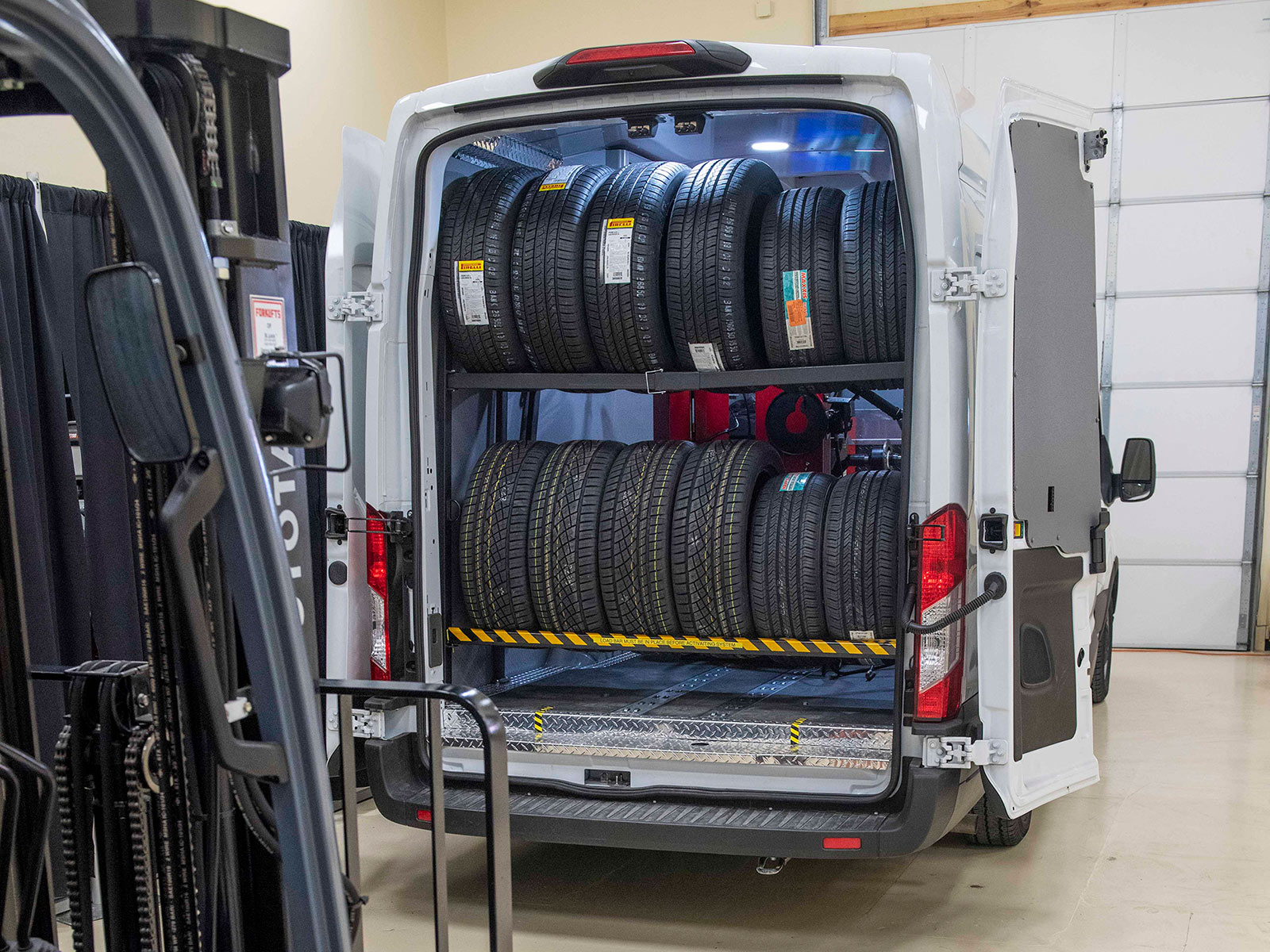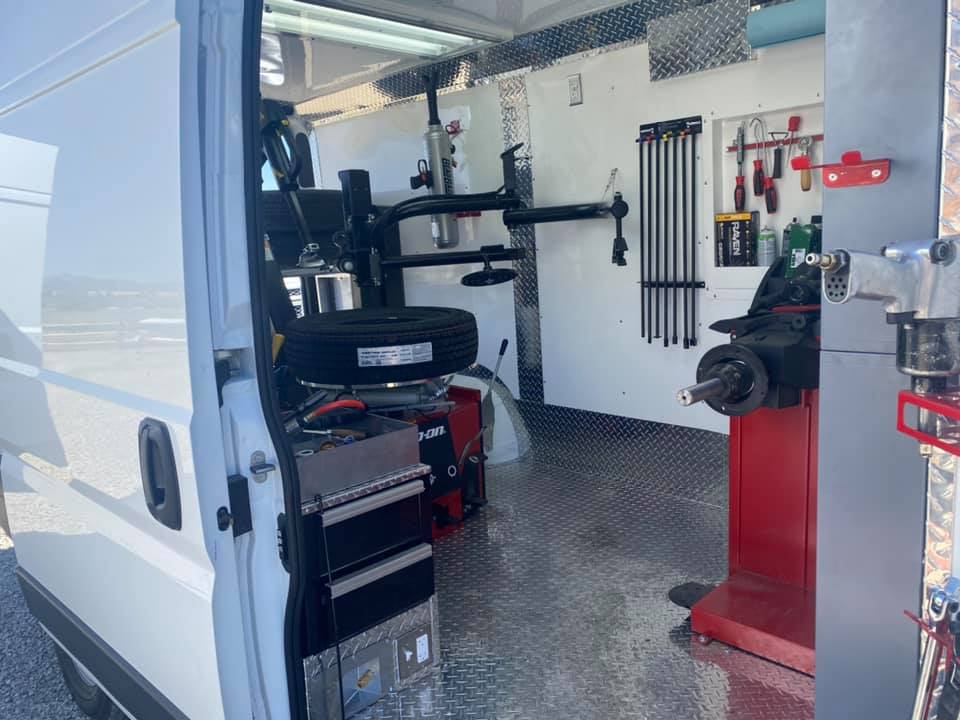Emergency Mobile Tire Service Available in Las Vegas
Emergency Mobile Tire Service Available in Las Vegas
Blog Article
Tire Solution: Proven Techniques for Optimal Tire Upkeep and Care
From guaranteeing appropriate tire stress to regular rotation and placement, there are tried and tested methods that can substantially expand the lifespan of your tires and enhance general driving experience. Allow's dig into the globe of tire service and uncover the keys to keeping your tires in first-class shape for the lengthy haul - Mobile Tire Service Las Vegas.
Value of Tire Pressure
Ample tire pressure advertises much better fuel effectiveness, as under-inflated tires can lead to raised rolling resistance, causing the engine to function harder and take in even more fuel. Right tire stress guarantees even step wear, boosting tire longevity and saving cash in the lengthy run by postponing the need for early substitutes. On a regular basis examining and adjusting tire stress, specifically in the past long journeys, is a basic yet reliable means to enhance car performance, prolong tire life expectancy, and focus on safety and security on the roadway.
Tire Turning Guidelines
When thinking about tire rotation guidelines, it is vital to recognize the relevance of this upkeep job in taking full advantage of tire life expectancy and preserving optimum lorry efficiency. Tire turning entails transforming the placement of each tire on a vehicle to ensure even step wear. Front tires often tend to wear more rapidly than rear tires due to guiding pressures, making routine rotation important for balanced wear patterns. The recommended rotation pattern varies depending upon whether a car is front-wheel, rear-wheel, all-wheel, or 4x4. Normally, tires must be turned every 5,000 to 7,500 miles, or as advised in the vehicle guidebook. Disregarding tire rotation can result in irregular wear, influencing handling, grip, and possibly compromising automobile safety and security. By sticking to correct rotation standards, vehicle drivers can expand the life of their tires, enhance fuel performance, and improve overall driving experience. Normal turning is an easy yet reliable upkeep method that contributes significantly to tire long life and car performance.

Advantages of Wheel Alignment
Ensuring appropriate wheel alignment after tire turning is crucial for maintaining balanced wear patterns and making best use of car performance. Wheel placement describes the change of the angles of the wheels to the manufacturer's specs. Among the key benefits of wheel positioning is enhanced guiding and handling reaction. When the wheels are appropriately lined up, it minimizes guiding initiative, ensuring a smoother and much more controlled driving experience. Furthermore, appropriate wheel positioning assists to prolong the life expectancy of your tires. Misaligned wheels can trigger unequal tire wear, causing premature tire replacement and boosted upkeep expenses.

Tire Footstep Depth Inspect
Executing a regular evaluation of tire walk deepness is important for preserving secure driving problems and prolonging the life expectancy of your tires. The walk on your tires plays an essential function in supplying grip, specifically in slippery or wet conditions. To check your tire walk depth, you can use a walk depth scale read the article or the dime test. The recommended step depth is at least 2/32 of an inch. If the walk deepness is listed below this limit, it is time to change your tires to ensure optimal performance and safety when traveling. Irregular step wear can suggest problems with tire alignment, suspension, or stress, highlighting the significance of routine walk depth checks. Ignoring to keep an eye on and preserve proper tread deepness can bring about minimized hold, longer braking distances, and a raised threat of hydroplaning. By integrating tire walk depth look into your regular upkeep schedule, you can drive with confidence recognizing that your tires are in top problem.
Seasonal Tire Inspection
A thorough analysis of tire problem tailored to details climate condition is vital for maintaining ideal performance and security throughout the year. Seasonal tire examination is an essential facet of tire maintenance that makes sure tires are all set to face the difficulties posed by different weather problems. To prepare for winter, it is necessary to check the tire pressure regularly as cold temperature levels can create tire pressure to drop. Checking tire tread deepness is likewise essential to ensure appropriate grip on snow and frozen roads. Additionally, looking for indicators of damage, such as cracks or bulges, can help avoid prospective tire failings. As the periods adjustment, it is important to assess tire condition and make any required modifications to ensure secure driving. By performing routine seasonal tire assessments, motorists can lengthen tire life-span, boost gas performance, and most significantly, make sure a safe and secure driving experience in differing climate condition - Mobile Tire Repair Las Vegas.
Final Thought
To conclude, preserving appropriate tire pressure, rotating tires consistently, straightening wheels correctly, keeping track of step depth, and conducting seasonal assessments are vital techniques for ideal tire treatment. By complying with these proven techniques, drivers can ensure their tires last much longer, carry out far better, and contribute to total car safety and security. It is essential to focus on tire maintenance to stop accidents, enhance gas effectiveness, and lengthen the life-span of tires.
Adequate tire pressure promotes far better gas effectiveness, as under-inflated tires can lead to raised rolling resistance, causing the engine to work tougher and consume more gas.When taking into consideration tire rotation guidelines, it is necessary to understand the significance of this upkeep job in optimizing tire life-span straight from the source and maintaining optimal automobile efficiency. Seasonal tire examination is a fundamental aspect of tire from this source maintenance that makes sure tires are all set to face the challenges positioned by various climate problems. By performing regular seasonal tire inspections, chauffeurs can prolong tire life expectancy, improve fuel effectiveness, and most significantly, guarantee a secure driving experience in varying weather conditions.
In conclusion, maintaining proper tire pressure, rotating tires routinely, aligning wheels correctly, monitoring tread deepness, and performing seasonal examinations are essential practices for optimum tire treatment.
Report this page